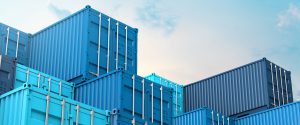
Analyzing the Indian E-Commerce Logistics Market
Read Time: 4 Minutes
India’s online shopping market is huge and fast-growing. The nation’s current 100 million online shoppers should grow to 350 million by 2025, with daily shipments growing from the current 8 million currently to about 25 million — a 40% compound annual growth rate. Not unexpectedly, this growth will pose several challenges for e-commerce logistics in India.
The Size of Indian E-Commerce Market Logistics
Currently, about 40% of shipment volume is driven by the nation’s top 500 to 700 postal codes (PINs), which are those of India’s largest cities and suburbs. The next 25 or 30 cities, so-called Tier 1 cities, consist of 1,500 to 2,000 PINs and account for about 20% of shipment volume. Tier 2 cities (5,000 to 6,000 PINs) and the remainder of the approximately 22,000 PINs in the country account for the remaining 40% of shipments. There has been a shift in favor of Tier 2 and the rest of the country over the last few years that is likely to accelerate.
In terms of the category mix of these shipments, consumer electronics is the largest contributor at around 55%, followed by soft goods including apparel, shoes, jewelry, etc., which account for about 25%. Over the next three to four years, food and health/beauty categories should increase from about 10% to about 15% of the total, as should general merchandise (home and kitchen appliances, furniture, etc.).
Dominant Players in Indian E-Commerce Logistics
The dominant players in Indian e-commerce logistics are Amazon and the Flipkart Group, which consists of Flipkart and Myntra.
As of fourth quarter 2020, Amazon accounted for close to 3 million shipments per day, followed by Flipkart plus Myntra at around 2.5 million per day. All the other horizontals and verticals, including Meesho, ShopClues, and Snapdeal, accounted for about 2.5 million daily shipments. Amazon’s shipping wing — Amazon Transportation Services — accounted for about 80% to 85% of its shipments (about 2.75 million per day), up from about 55% to 60% just three or four years ago. Flipkart’s shipping wing, Ekart, and Myntra’s, Myntra Logistics, handle about 65% to 70% of their combined firm’s shipments (between 1.5 million and 1.7 million per day), which has not changed much over time.
These shippers account for more than half — about 4.25 million out of the total 8 million, or 55% — of daily shipments in India. The remaining 45% is shared by specialized third-party logistics companies including Delhivery (about 2 million shipments per day), Ecom Express (about 1 million), Xpressbees, and more conventional players like Blue Dart.
The Cost of Indian E-Commerce Logistics
Shipment costs — a combination of first-mile, middle-mile, and last-mile costs — was about 100 rupees or US$1.40 per shipment a few years ago. But as volumes have grown, shipment costs have declined about 25% to about 75 rupees, or a little over a dollar. Roughly 60% of that, or 44 rupees, is last-mile costs, with 80% of that coming from the delivery cost, which is the manpower cost of the delivery agent and any fuel and other incentives provided to that person. Another 12 rupees of last-mile costs comes from operating the last-mile delivery hub.
Middle-mile costs typically involve the cost of intercity transportation, usually by surface. Middle-mile volume has come down over the years as Amazon and Flipkart have opened more warehouses around the country and can do more local shipping.
The cost of operating a warehouse or sort center, whether by a company’s own or a third-party logistics firm, is about 10 rupees per shipment, bringing the total logistics cost per shipment to about 75 rupees. That excludes warehousing or fulfillment center costs, which add another 20 to 25 rupees per shipment.
As volumes triple over the next four or five years, total logistics costs should flatten rather than be reduced much further due to two factors: greater last-mile productivity is difficult to achieve and more of the overall growth in shipping will be coming from smaller cities and rural areas where population is dispersed. It’s likely that total logistics costs will come to about 65 rupees per shipment, or about US$0.90. That’s roughly 4% to 5% of the order value.
In terms of warehousing space, Amazon and Flipkart have about 8 to 9 million square feet and 5 to 6 million square feet, respectively. Delhivery has the most warehousing space in the third-party space, about 2.5 to 3 million square feet.
In terms of last-mile hubs, Ecom Express and Delhivery are probably the biggest players. Ecom Express has around 3,000 last-mile hubs with coverage exceeding 25,000 PIN codes. ATS, including its franchise partners, has about 1,500 hubs covering 12,000 to 14,000 PINs. The strategy for ATS and Ekart has been to saturate the top markets, which have the highest concentration of customers, and use their warehousing and last-mile delivery network to provide a very solid end-to-end customer experience.
This e-commerce industry article is adapted from a GLG Remote Roundtable. If you would like access to events like this or would like to speak with ecommerce industry experts or any of our approximately 1 million industry experts, please contact us.
订阅 GLG 洞见趋势月度专栏
输入您的电子邮件,接收我们的月度通讯,获取来自全球约 100 万名 GLG 专家团成员的专业洞见。
